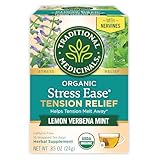The Covid-19 virus, also known as the SARS-CoV-2, has spread throughout six continents. There are now more than 94 thousand cases and more than 3,000 dead. The death rate or case fatality rate is currently 3.4%.
The elderly and the ones with medical problems like heart disease, lung disease, diabetes, and cancer are noted to be at risk of dying from the infection.
-
Contents hide
-
What Happens to Critically-ill Covid-19 patients?
-
3 Reasons Why Smokers Have Worse Covid-19 Outcomes
The US has an obesity rate of 40%. Obesity is associated with multiple medical problems. That said, there is a possibility that 40% of the US population is at risk of having a severe infection. It is critical to avoid getting the virus.
The spread of Covid-19 is usually by droplet. The virus can stay on a surface for as long as 9 days. Touching a contaminated surface can easily reach the face as a study has shown that students touch their faces 23 times in an hour with contact mostly to the skin (56%), followed by mouth (36%), nose (31%), and eyes.
A higher temperature such as 30 degrees C 86 degrees F reduced the duration of persistence of highly pathogenic MERS. MERS is for Middle Eastern Respiratory Syndrome that causes an epidemic in the Middle East in 2012.
Shortage of Disinfectants
Many retailers and online stores have run out of disinfectant wipes. Alternatives to disinfectant wipes will be discussed here. Walgreens, CVS, and even Amazon are “out of stock.”
A review from the Journal of Medical Infection studied the disinfectants that were useful for the SARS and MERS coronaviruses. Since the Covid-19, also known as SARS-CoV-2, is new, there is no published study specific to its disinfection. It is vital to look at the concentration since a more dilute formulation can be ineffective.
Another source for this article is UptoDate. UpToDate is a resource used by many doctors to stay current with medical practice. That being said, here is the list.
- Ethanol 62% to 71%
- Hydrogen peroxide 0.5%.
- Sodium hypochlorite 0.1% to 0.5%. Use a dilution of 1:50 of standard bleach or 1 part bleach and 50 parts water.
- Hexachlorophene
- Glutaraldehyde 2%
- Povidone-iodine 1% – can stain. The typical store-bought concentration is 10%. Dilute it by adding 10 parts water to 1 part iodine

Before making the dilutions, consider the initial concentration. The common household bleach is 5-6% sodium hypochlorite.
Less effective are:
- 0.04% benzalkonium chloride,
- 0.06% sodium hypochlorite and
- 0.55% ortho-phtalaldehyde
Not effective:
Coronaviruses were not killed by benzalkonium chloride or chlorhexidine unless 70% ethanol was added.
Feel free to share. Don’t miss an article. Subscribe for free with your email.
Don’t Get Sick!
Related:
- 30 Ways For a Good Sleep Without Drugs
- How Does Sleeping Protect the Brain?
- 25 Stress-Reduction Techniques
- What is Insulin Resistance?
- The Magical Endothelium
- 8 Ways Decent Dental Care Defies Dementia
- How to be Active from Sedentary
- 21 Benefits of High-Intensity Interval Training
- How to Do Intermittent Fasting
- The Game-Changing Uses of KAATSU
- Early Time-Restricted Feeding is Intermittent Fasting In Sync with the Circadian Rhythm
- Will Fasting Make My Muscles Shrink?
© 2018 – 2020 Asclepiades Medicine, LLC All Rights Reserved
DrJesseSantiano.com does not provide medical advice, diagnosis or treatment
Traditional Medicinals Tea, Organic Stress Ease, Relieves Tension, Promotes Relaxation, 16 Tea Bags
The Republic of Tea, Get Relaxed No.14 Tea for Relieving Stress Tea, 36-Count
Discover more from Don't Get Sick!
Subscribe to get the latest posts sent to your email.





























